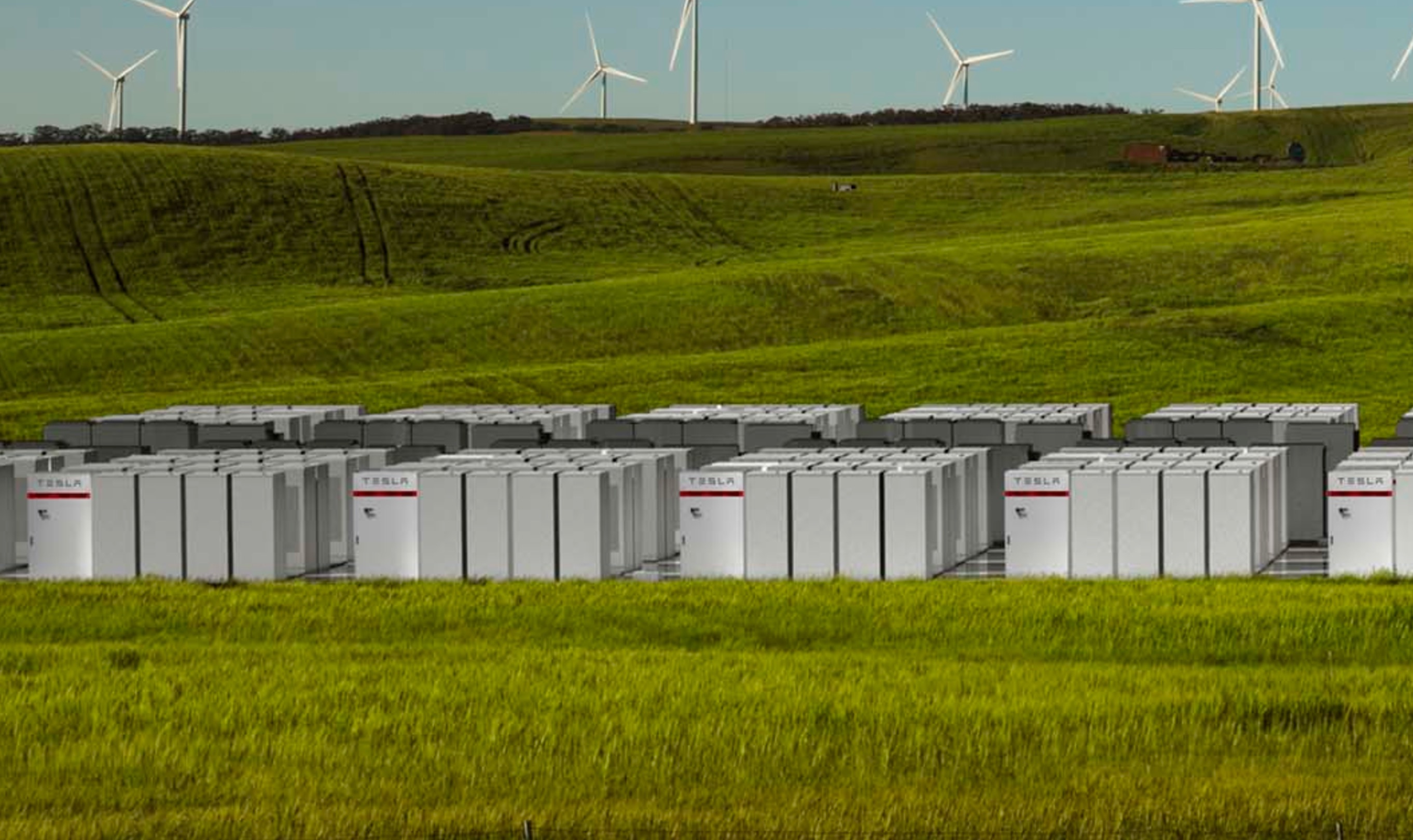
Since going online last year, Tesla’s Powerpack farm in South Australia has established a reputation for being a quick, clean, and efficient backup to the region’s beleaguered energy grid. As the big battery continues to prove its critics wrong, the Australian Energy Market Operator (AEMO) has announced that it would no longer be needing the services of several fossil fuel-powered plants, which supported the grid prior to the arrival of the Tesla Powerpack Farm.
AEMO’s recent initiative closes the page on a three-year-old requirement for 35 MW of Frequency Control Ancillary Services (FCAS) to be provided in South Australia during instances when the state’s grid is at risk of separating from the national grid, ensuring that the state’s grid could operate safely and securely by itself. In an announcement on Thursday, the AEMO acknowledged that the energy landscape in the region has changed during the past year.
“The operation of SA has changed significantly over the past 12 months. Synchronous unit requirements (for SA system strength) and the installation of the Hornsdale battery have ensured regulation FCAS is more readily available post-islanding of SA. Hence this requirement is no longer considered necessary,” AEMO noted.
Prior to the installation of the Tesla Powerpack farm, the local providers of FCAS turned the South Australian energy grid into a booming business. The providers, which utilize fossil fuel-powered plants, kept the price of FCAS in the state extremely high, rising nearly 100-fold to the market cap of $14,000/MWh. At one point, the cost of South Australia’s FCAS rose to around $6 million a day, and considering the strain on the region’s energy grid; the state ended up paying more than $100 million in 2016 and 2017.
The Tesla big battery, officially named as the Hornsdale Power Reserve, disrupted the market when it went online. With the Powerpack farm present, gas generators were unable to dictate the price of backup energy services. The battery farm also proved that it was quicker, more flexible, more accurate, and even more cost-effective than fossil fuel-powered plants.
The Powerpack farm’s capabilities were put to the test in late August, after twin lightning strikes resulted in the failure of two major transmission lines linking Queensland and New South Wales. The results of the lightning strikes were notable — the South Australia and Queensland grids were separated and there were widespread power losses in NSW, Tasmania, and Victoria. In South Australia, there was no loss of power, and no failure of generators due to the fast response of the Tesla Powerpack farm.

The feats of the Horsndale Power Reserve has triggered an energy movement in Australia, becoming the frontliner in AEMO’s contingencies against major faults and disturbances to the grid. New battery-based projects are currently underway in several other areas, such as Dalrymple North in South Australia, at the Ganawarra solar farm, and a Ballarat network junction in Victoria. In a statement to Renew Economy, Christian Schaefer, AEMO’s head of system capability, noted that the region’s move away from fossil fuel-powered backup plants is a step in the right direction.
“This is a good news story. The work that our engineers in the AEMO team have done shows that we can continue to operate South Australia in a stable and secure manner. Hornsdale has had a significant impact on the South Australia system, and we have got new batteries coming online with Victoria and South Australia. That is really positive. It shows that all parts of the industry — networks, generators, the renewable sector, battery providers and regulators — are getting behind this and showing an interest in what has been done,” he said.
Tesla Energy does not make as many headlines as the company’s electric car business, but the business is in a constant process of growth. In a recent statement, billionaire investor Ron Baron noted that he expects Tesla’s electric car and energy business to be equally worth $500 billion each by 2030. Tesla CTO JB Straubel, for his part, has previously teased that Tesla Energy is indeed going after backup peaker plants.
“I think what we’ll see is we won’t build many new peaker plants, if any. Already what we’re seeing happening is the number of new ones being commissioned is drastically lower, and batteries are already outcompeting natural gas peaker plants,” Straubel said.

Top Rated Comments (view all)
Discuss: News
Top rated
Newest

